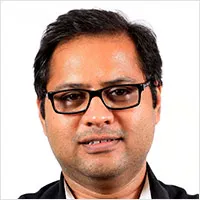Why everyone wants Raj Thackeray: MNS chief’s meeting with Fadnavis sparks Maharashtra poll buzz
The meeting was not surprising for those familiar with Thackeray’s political style as his career has been defined by frequent shifts in allegiance and mixed signals to opponents as well as allies.
 The BJP views MNS chief Raj Thackeray as a strategic disruptor who draws his support from the same Marathi-speaking electorate that forms the Uddhav Sena’s core voter base. (Facebook)
The BJP views MNS chief Raj Thackeray as a strategic disruptor who draws his support from the same Marathi-speaking electorate that forms the Uddhav Sena’s core voter base. (Facebook) Two months after hinting at a political rapprochement with estranged cousin and Shiv Sena (UBT) chief Uddhav Thackeray, Maharashtra Navnirman Sena (MNS) chief Raj Thackeray has once again stumped political pundits with a surprise meeting with Chief Minister Devendra Fadnavis at a plush Mumbai hotel on Thursday.
After the Raj-Fadnavis meeting, Shiv Sena minister Sanjay Shirsat, seen as a close aide of Deputy CM Eknath Shinde, added another layer of intrigue to the buzz. “One can see many U-turns in politics. Nothing can be predicted about what can happen in politics. Such alliances have to be made to strengthen a party or expand it. We had given an offer (of alliance) to Raj saheb before and looking at his appeal, he can very well fight the civic body polls. He should come with us (Mahayuti),” he said.
While the meeting, which comes amid speculation of political realignment ahead of the crucial civic body polls in the state, has flummoxed pundits, it is not surprising for those familiar with Raj Thackeray’s political style as his career has been defined by frequent shifts in allegiance, and mixed signals to opponents as well as allies.
Even as the MNS has seen its vote share fall sharply since its inception in 2006 to just 1.55% in last year’s Assembly polls, Thackeray continues to command a unique space in the state’s political scenario.
His charisma, coupled with an oratory resembling Shiv Sena founder Bal Thackeray and his vocal push for regional identity, resonates with segments of the urban Marathi electorate, making him a figure who continues to be wooed by parties across the state.
MNS’s political journey
Following a public and acrimonious split with the Bal Thackeray-led Shiv Sena, Raj charted his path and floated the MNS in 2006. Three years later, the party made a spectacular debut in the Assembly polls, winning 13 seats with a 5.75% vote share.
However, the momentum proved difficult to sustain, and over the next decade he oscillated from alliance to alliance. In 2014, the MNS leader supported Narendra Modi, but five years later, attacked him while campaigning for the Congress-NCP combine. In 2019, he backed Modi again and even shared the stage with him in the run-up to the Assembly polls. Last year, he publicly expressed his willingness to work with Uddhav, only to be seen having discussions with Fadnavis.
While critics term Thackeray’s moves as indecisiveness or political opportunism, the MNS chief calls them “pragmatic shifts”. “The only party, apart from the Shiv Sena, that I shared a relationship with is the BJP. I often met leaders like Pramod Mahajan and other leaders from the Sangh,” he told a Marathi channel in 2023.
Thackeray’s political style, unmistakably modelled around his uncle, by consciously mirroring his dressing, speech and political rhetoric appeals to an older Shiv Sena support base, which is seemingly disillusioned with Uddhav’s transformation into a more centrist and coalition-oriented force.
The rapprochement buzz was triggered after Raj told filmmaker Mahesh Manjrekar in a podcast in April that for him, “the interest of Maharashtra is bigger than everything else”.
“I can keep aside minor disputes. I am ready to work with Uddhav. The only question is whether he is ready to work with me,” he said.
The statement was interpreted as a serious overture, but the subsequent meeting with Fadnavis on Thursday has reopened the question about his seriousness.
Why a family reunion may work
The cousins – Uddhav and Raj – may have emerged from the same ideological and familial roots, but their political journeys have been sharply divergent. Their rivalry is largely driven by clashing leadership styles and has often turned public.
In the context of the civic polls, a temporary Sena (UBT)-MNS reconciliation may help consolidate the Marathi votes, especially in key urban centres such as Mumbai, Thane, and Nashik.
A Thackeray reunion could also help tap into the emotional connect of older voters who long for the Bal Thackeray era, with Raj’s aggressive oratory and crowd-pulling abilities compensating for Uddhav’s relatively measured public persona.
Politically, it could help counter the BJP’s organisational strength and the Shiv Sena’s resource-backed push.
However, the alliance is likely to be fraught with deep internal contradictions as the cousins split not over ideology but over a turf war on authority. It remains uncertain if the recent political expediency, where both the Sena (UBT) and MNS are seemingly at their lowest, can override the cousins’ personal history.
Why BJP is interested in MNS
The BJP views the MNS chief as a strategic disruptor who draws his support from the same Marathi-speaking electorate that forms Uddhav’s core voter base, and believes that his attacks are far more effective given their family ties. It dilutes the Sena (UBT)’s presence in urban areas and helps the BJP as well as the Shiv Sena win tightly contested seats.
Another factor that sits well with the BJP is Thackeray’s non-insistence on demanding a significant share in seat-sharing, unlike the Shiv Sena. This makes the MNS chief a manageable partner who can be brought in to boost the BJP’s Marathi appeal with almost no friction.
Backing Raj Thackeray also serves the BJP’s long-term goal of keeping in check Shinde’s rising popularity across the state.






